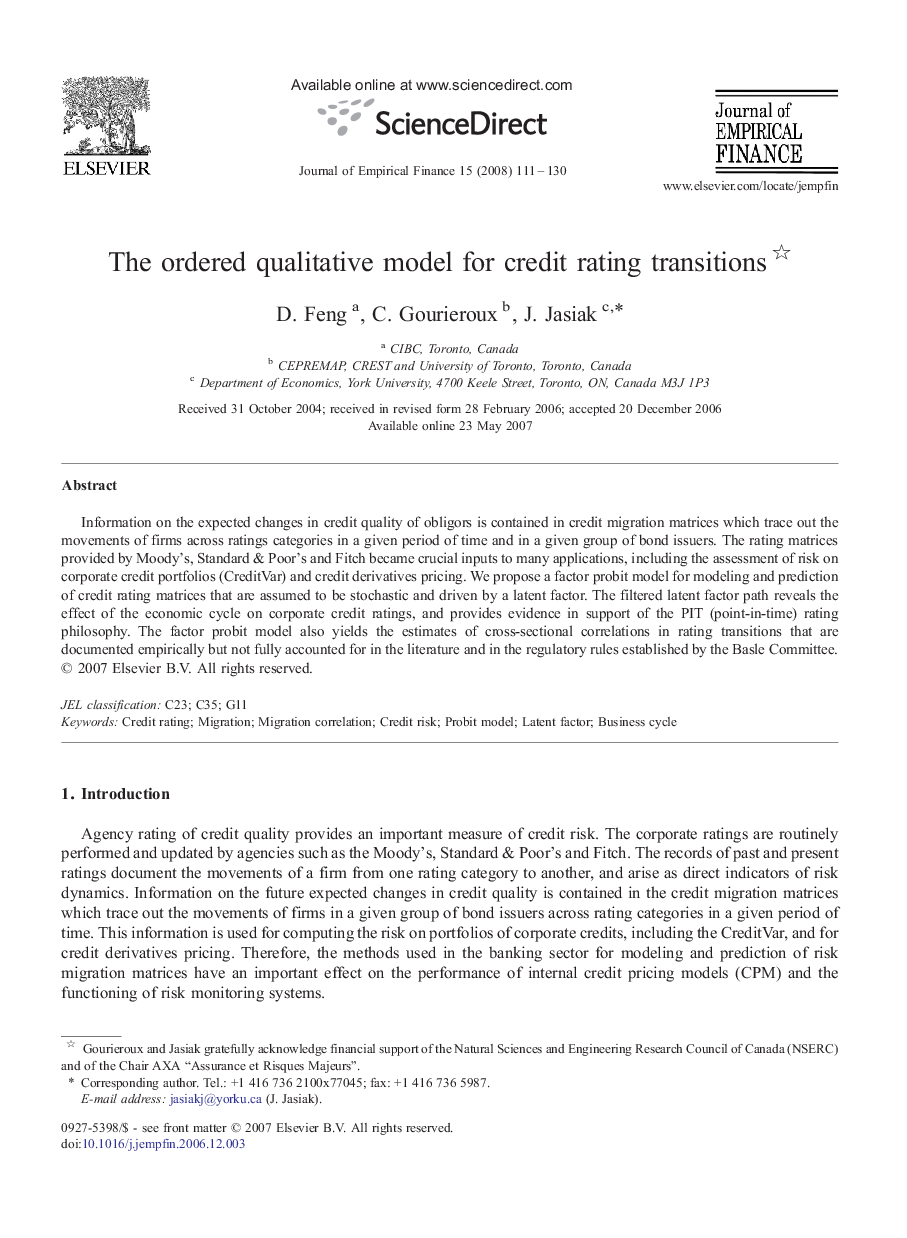| Article ID | Journal | Published Year | Pages | File Type |
|---|---|---|---|---|
| 958370 | Journal of Empirical Finance | 2008 | 20 Pages |
Information on the expected changes in credit quality of obligors is contained in credit migration matrices which trace out the movements of firms across ratings categories in a given period of time and in a given group of bond issuers. The rating matrices provided by Moody's, Standard & Poor's and Fitch became crucial inputs to many applications, including the assessment of risk on corporate credit portfolios (CreditVar) and credit derivatives pricing. We propose a factor probit model for modeling and prediction of credit rating matrices that are assumed to be stochastic and driven by a latent factor. The filtered latent factor path reveals the effect of the economic cycle on corporate credit ratings, and provides evidence in support of the PIT (point-in-time) rating philosophy. The factor probit model also yields the estimates of cross-sectional correlations in rating transitions that are documented empirically but not fully accounted for in the literature and in the regulatory rules established by the Basle Committee.
